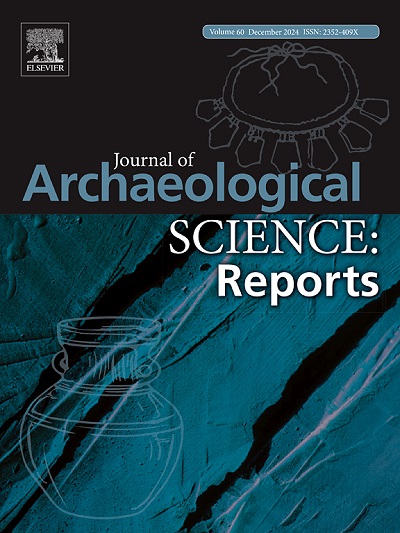The use of animals by inhabitants of the Medzhybizh Castle (Ukraine) in the 12th–19th centuries CE
IF 1.5
2区 历史学
0 ARCHAEOLOGY
引用次数: 0
Abstract
During excavations in the Medzhybizh Castle (western Ukraine), a large number of animal bones were found, mainly in kitchen remains dated to the 12th–13th and 18th–19th centuries and, to a lesser extent, in the 17th-century layer. A thorough analysis of the sample allows establishing the role of fish, birds, and mammals in the everyday diet of the inhabitants of the castle during the Medieval Warm Period and at the end of the Little Ice Age. In general, the sources of meat were quite similar during different historical periods: domestic ungulates and birds predominated, while the role of hunting was less significant. The large number of remains of wild birds and mammals is likely because the castle was inhabited by the nobility and the military guard, for whom hunting was part of everyday life. Fish were an additional source of protein for the inhabitants of the Medzhybizh Castle. Seven fish species were identified in the sample, of which the northern pike, zander, and common carp are represented by the largest number of remains. Cultural changes are manifested in the emergence of new methods of cooking and the disappearance of falconry. Domestic animals and birds in the 18th–19th centuries were slightly larger than those in the 12th–13th centuries. Despite the general similarity in the diversity of wild species, certain changes have been identified, probably due to the impact of local climate changes. Based on the habitat preferences of particular species, it is possible to assume the appearance of open landscapes and the decrease in forest cover and thickets of riparian vegetation during the Little Ice Age.
公元12 - 19世纪梅德日比什城堡(乌克兰)居民对动物的使用
在Medzhybizh城堡(乌克兰西部)的挖掘过程中,发现了大量的动物骨骼,主要是在12 - 13世纪和18 - 19世纪的厨房遗骸中,以及较小程度上在17世纪的层中。对样本进行彻底的分析,可以确定鱼类、鸟类和哺乳动物在中世纪温暖期和小冰河期结束时城堡居民日常饮食中的作用。总的来说,在不同的历史时期,肉类的来源非常相似:家养有蹄类动物和鸟类占主导地位,而狩猎的作用则不那么重要。大量的野生鸟类和哺乳动物的遗骸可能是因为这座城堡是贵族和军事警卫居住的,对他们来说,狩猎是日常生活的一部分。对于Medzhybizh城堡的居民来说,鱼是蛋白质的另一个来源。在样本中鉴定出7种鱼类,其中北方梭子鱼、梭子鱼和鲤鱼的遗骸数量最多。文化的变化表现在新的烹饪方法的出现和猎鹰的消失。18 - 19世纪的家畜和鸟类比12 - 13世纪的略大。尽管野生物种的多样性大致相似,但已经确定了某些变化,可能是由于当地气候变化的影响。根据特定物种对栖息地的偏好,可以假设在小冰期出现了开阔的景观,森林覆盖和河岸植被的减少。
本文章由计算机程序翻译,如有差异,请以英文原文为准。
求助全文
约1分钟内获得全文
求助全文
来源期刊

Journal of Archaeological Science-Reports
ARCHAEOLOGY-
CiteScore
3.10
自引率
12.50%
发文量
405
期刊介绍:
Journal of Archaeological Science: Reports is aimed at archaeologists and scientists engaged with the application of scientific techniques and methodologies to all areas of archaeology. The journal focuses on the results of the application of scientific methods to archaeological problems and debates. It will provide a forum for reviews and scientific debate of issues in scientific archaeology and their impact in the wider subject. Journal of Archaeological Science: Reports will publish papers of excellent archaeological science, with regional or wider interest. This will include case studies, reviews and short papers where an established scientific technique sheds light on archaeological questions and debates.
 求助内容:
求助内容: 应助结果提醒方式:
应助结果提醒方式:


